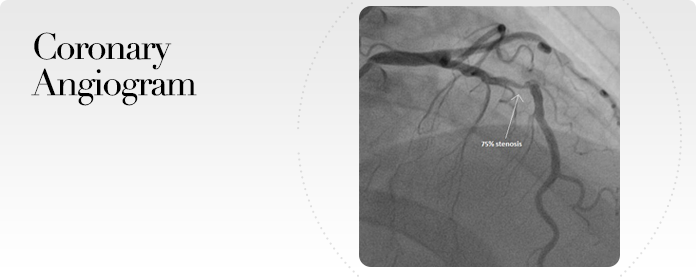| A coronary angiography is a test which enables us to see the blood vessels supplying the whole heart. |
|
| In order to see the blood vessels down to the small branches, a “dye” or contrast agent must be injected directly into the arteries and then an X-ray picture is taken of the heart. The “dye” shows up as dark areas as it flows down the artery, allowing us to visualize areas where the vessel is narrowed (a thin stream) versus areas where the vessel is normal (thicker stream). Several views of the artery must be taken so as not to miss areas of narrowing which can be seen only in one view and not others. As the heart has a left and a right artery, both these arteries must be selectively injected with the “dye” to get the complete picture. |
|
| A cardiac catheter is a fine-bore tube that has a lumen for injecting the “dye”. The catheter is introduced into the circulation from an artery in the groin or the wrist. The catheter is advanced under X-ray guidance to the left or right artery of the heart and the “dye” is injected directly into the artery. |
|
| Coronary angiography by cardiac catheterization is the “gold standard” for assessing blockages of the heart arteries. |





